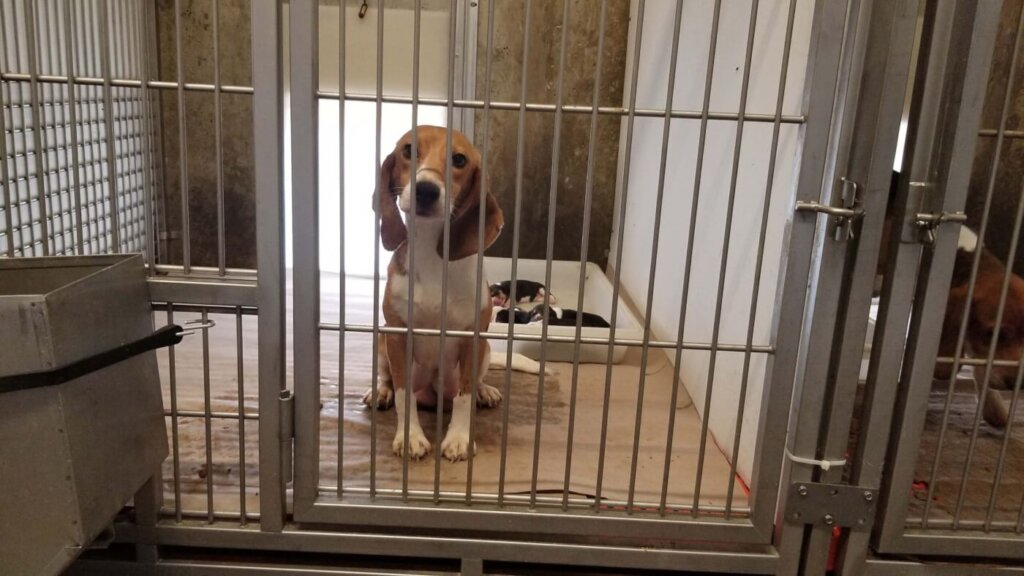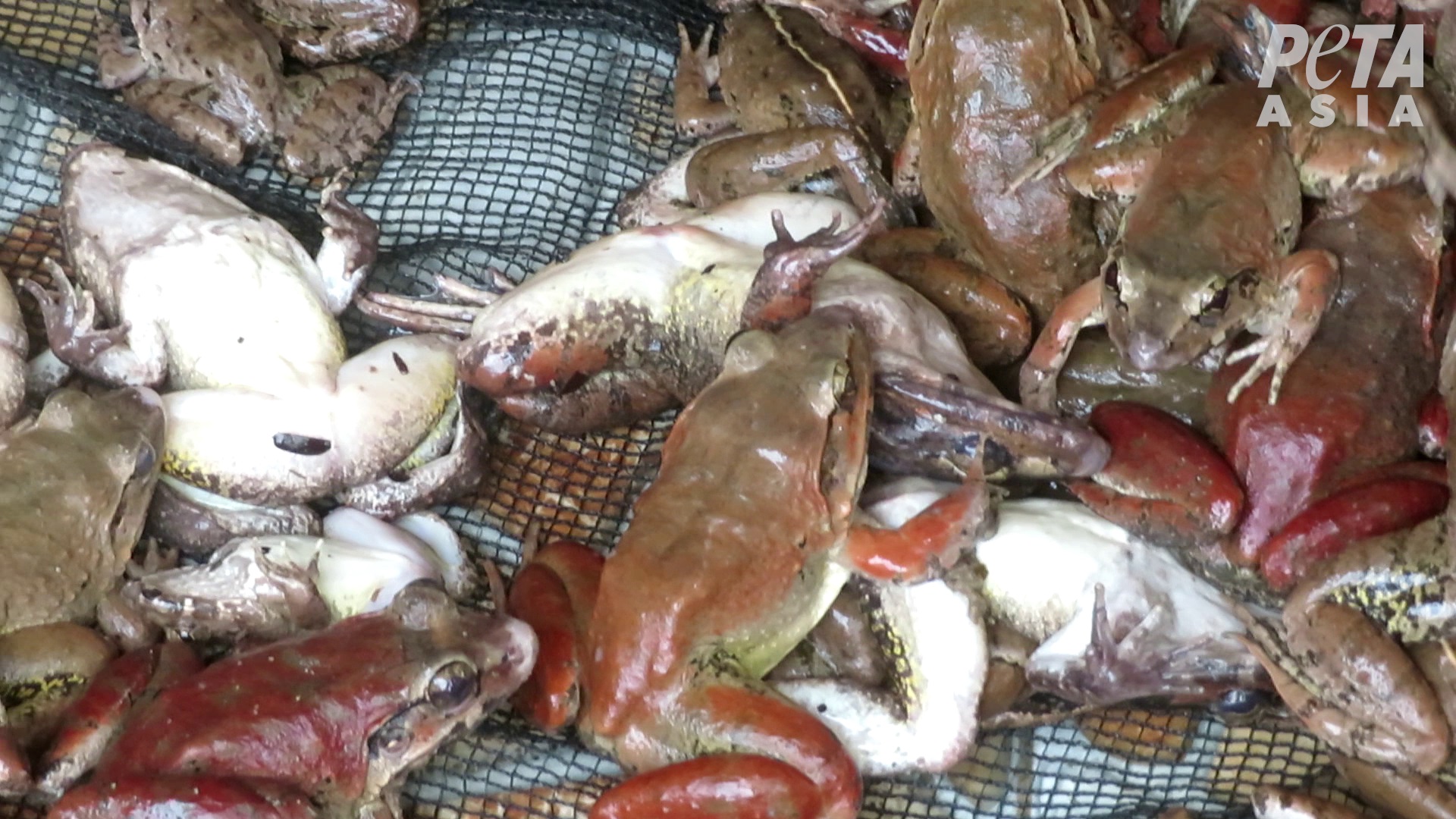
PETA Asia Uncovers Cruelty in the Frog-Legs Industry
PETA Asia’s recent investigation into Indonesia’s frog-legs industry unearthed a disturbing reality that demands immediate attention. From extremely crowded sacks of suffocating frogs to agonising killing methods, frogs are suffering before reaching people’s plates in the EU and elsewhere.
Frogs are known for their webbed feet and flying leaps, but these fascinating, sensitive animals have countless other notable characteristics. Many frog species are devoted – and resourceful – parents, and they have individual personalities that may be bold, guarded, or peaceful.
Just like humans, frogs feel pain and fear. They don’t want to be taken from their homes and killed, yet nearly 322 tonnes of frog legs were shipped from Indonesia to the EU between March and May this year. PETA calls on everyone to stop eating frog legs – or anything else derived from an animal.
Investigations Expose Cruelty to Frogs
The PETA Asia investigation documented that workers take frogs from nature and stuff them into extremely crowded sacks – causing many of them to asphyxiate. The animals may be kept in these sacks for two agonising days.
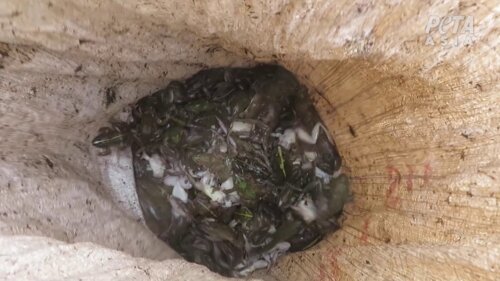
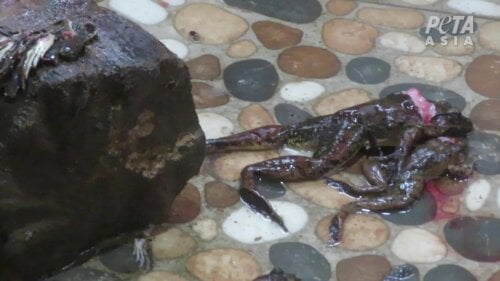
The video exposé shows an employee slamming live frogs onto the ground while sorting living and dead ones. Workers used knives to hack at frogs’ heads and feet. Some of the animals’ heads were severed completely, while others were only partially decapitated. Some workers also cut frogs’ feet off before hacking at their heads.
Many frogs were still alive and moving when workers tore off their skin. Investigators documented that frogs’ mouths opened and closed after decapitation and that their headless bodies moved for minutes after they were slaughtered.
This hell for frogs isn’t an isolated incident, as PETA Asia investigators documented egregious cruelty to frogs in every randomly selected facility they visited in Indonesia.
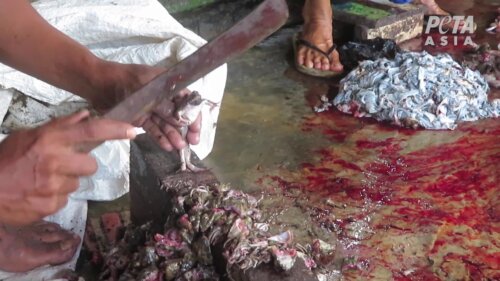
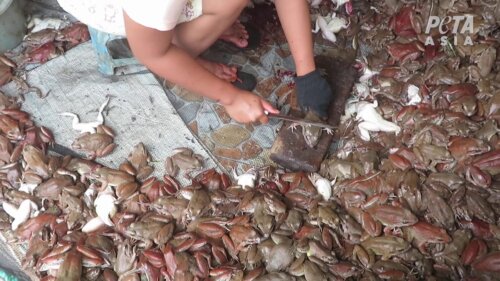
Environmental Implications
The consequences of this industry go beyond the cruelty inflicted on frogs. Various sources have shown that frog populations in Indonesia have declined in recent decades. According to the International Union for Conservation of Nature’s Red List of Threatened Species, populations of the fanged river frog and the crab-eating frog are decreasing.
If this trend continues, problems stemming from ecological imbalance – such as increased use of pesticides by farmers because there are no natural predators for insects – will inevitably develop.
Of the two species of frogs captured by workers in the video, only one is on the Indonesian Ministry of Environment and Forestry’s list of species permitted to be caught in nature. This restriction is likely why frog legs are mislabelled for export.
Labels That Lie
Indonesian suppliers deliberately mislabel and sell the Limnonectes macrodon frog species as Fejervarya cancrivora. Suppliers that sell these animals to distributors overseas admit that mislabelling is a regular occurrence and that they can distinguish between the species when packing them.
Violations of Laws
As we confront the violent reality of the frog-meat industry, we must acknowledge the blatant disregard for the laws in place. Article 66(1) of Indonesian Law No 18 of 2009 requires that measures be taken concerning animal well-being during capture, husbandry, slaughter, and transport. Additionally, Article 66(2) requires that animals generally be free from pain, fear, or pressure. Yet these facilities operate with callous disregard for the frogs’ pain and suffering and brazenly ignore these laws.
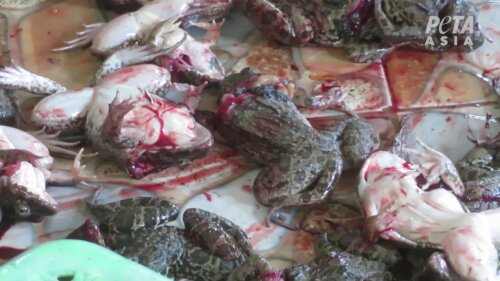

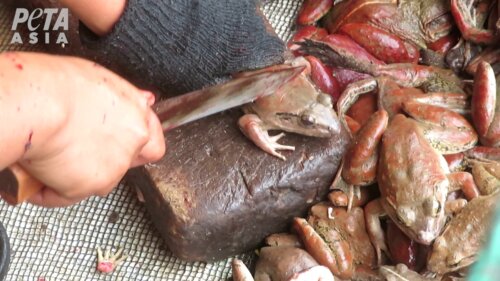
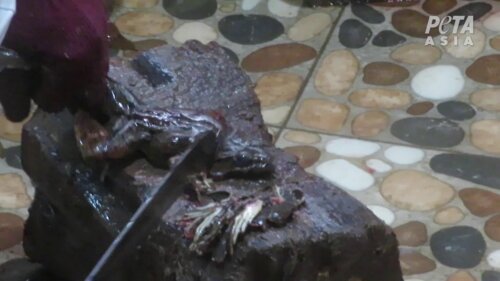
PETA Asia has filed a complaint with the relevant authorities, but your help is needed. As conscientious consumers, we hold the power to end this suffering – so let’s adopt a vegan lifestyle.
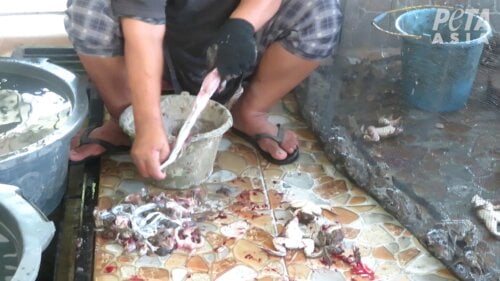
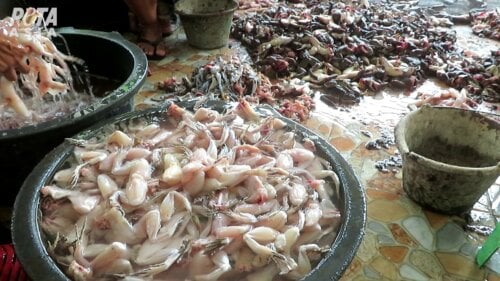
Take Action for Frogs
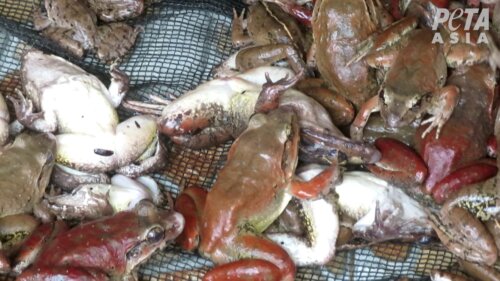
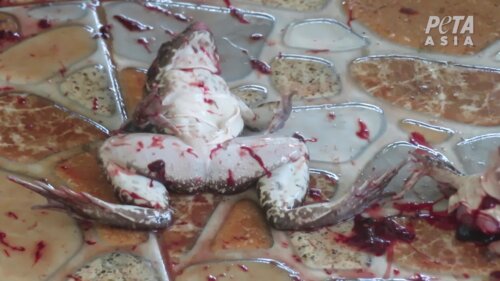
Please, never buy or consume frog legs. If you see any restaurants serving them, anywhere in the world, use PETA’s template letter to ask that they remove them from their menu.
Animals Are Suffering in Laboratories – Help Save Them Now
